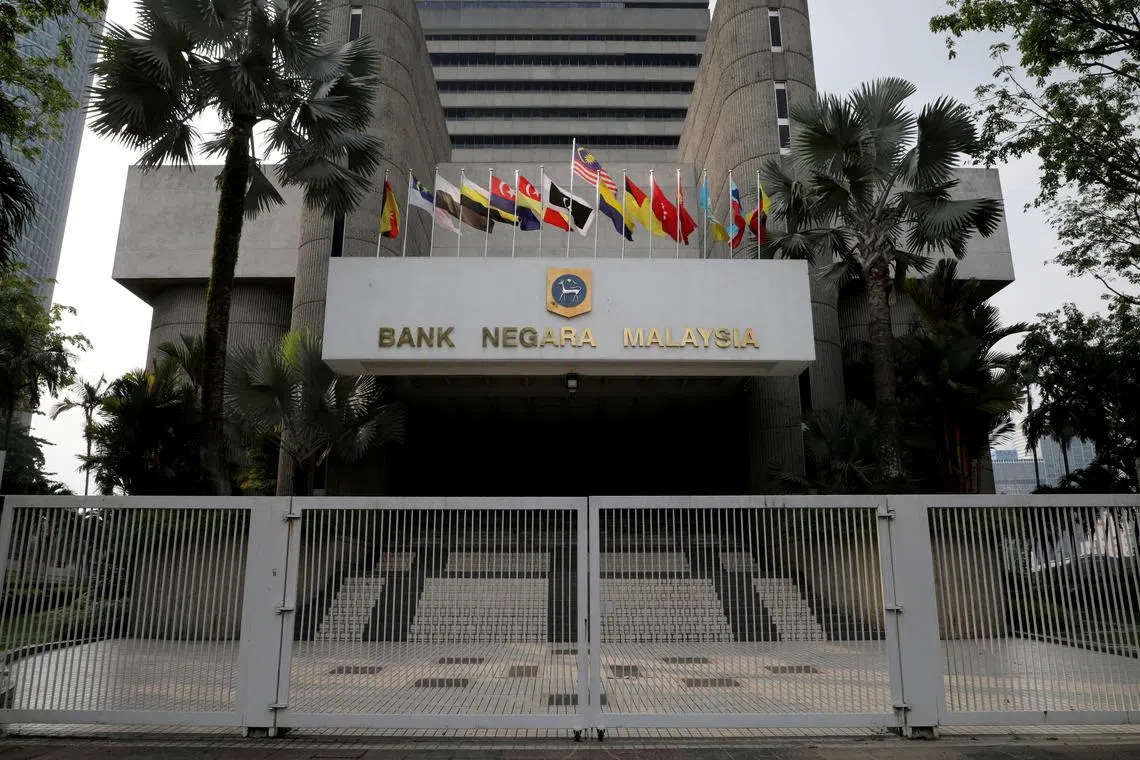Middle-income households in Malaysia tighten belts after surprise rate hike by central bank
Sign up now: Get ST's newsletters delivered to your inbox

Middle-income households, which make up 40 per cent of the population, earn between RM4,851 (S$1,446) and RM10,970 each month.
PHOTO: REUTERS
Follow topic:
KUALA LUMPUR - Middle- and high-income households in Malaysia will be the groups most affected by the central bank’s surprise decision to raise the overnight policy rate (OPR) on May 3.
This is because more than half of them have floating-rate loans, with interest rates that move up and down depending on market conditions. A rise in the OPR, which is the minimum interest rate charged among banks in the interbank money market, means having to pay higher interest.
Middle-income households, which make up 40 per cent of the population, earn between RM4,851 (S$1,440) and RM10,970 each month. Families with higher salaries than this are considered high-income, and make up 20 per cent of the population.
According to Bank Negara data, 53.4 per cent of middle-income earners have floating-rate loans, while 46.6 per cent took on fixed-rate loans. For high-income households, 62.6 per cent have floating-rate loans, with 37.4 per cent on fixed-rate loans.
Bank Negara has increased the OPR five times, totalling 125 basis points, since May 2022. On May 3, the central bank raised it by another 25 basis points to 3 per cent in a surprise move, bringing the OPR back to pre-pandemic levels.
Malaysia’s middle-income families have had to cut expenses and tighten their belts as rates rise, although they say their interest payments remain affordable so far.
First-time home buyer Intan Aberdin said her monthly mortgage repayment has increased by RM300 since Bank Negara started to raise rates in May 2022, which means she has less to set aside for savings.
“At this point, my savings are being squeezed. I also have to take care of my parents, so I really have to tighten my belt. At the same time, the asset’s value is not increasing in this property market,” said the 35-year-old journalist.
Mr Kapil Punj, 39, said he had to cut spending on entertainment, including having fewer restaurant meals, to help service his property loan, with his monthly payment going up by RM350.
“The rate hike is still manageable but I am feeling the pinch,” said Mr Kapil, who works as a refinery manager.
Bank Muamalat Malaysia chief economist Mohd Afzanizam Abdul Rashid said the impact of the rate hike on households depends on the size of their loan.
“The bigger the loan, the bigger the impact,” he told The Straits Times.
UOB Group senior economist Julia Goh sees the rate hike as a pre-emptive move due to the risk of inflation possibly climbing with subsidies, such as those for fuel, expected to be cut later in 2023. The Anwar Ibrahim-led government is reviewing its existing blanket subsidies which currently benefit everyone regardless of income level, and is looking to instead channel money directly towards low-income groups to mitigate the rising cost of living.
“Our core inflation remains elevated. Bank Negara sees inflation risks tilted on the upside and is largely dependent on domestic policy changes including on subsidies and price controls, financial market developments and commodity prices,” Ms Goh told ST. “Keeping interest rates too low now could lead to financial imbalances in the future.”
Core inflation, which was 3.9 per cent in the first quarter of 2023, has persisted above the historical average of around 2 per cent, said Bank Negara Malaysia governor Nor Shamsiah Mohd Yunus.
UOB Global Economics and Markets Research said Bank Negara may have reached the end of its interest rate hike cycle, as the central bank expects domestic growth at 4 per cent to 5 per cent, and inflation to be contained at 2.8 per cent to 3.8 per cent in 2023 with the recent rate hike.
“Subsidy rationalisation will post more upside pressure for consumer price inflation, living costs and business operating costs in the second half of 2023 should they materialise. This, alongside uncertainty surrounding the six state elections, could make it more challenging to raise rates further in the second half,” said its report.
Malaysia will hold state elections in Selangor, Negeri Sembilan, Penang, Kelantan, Terengganu and Kedah by July, which is set to be a barometer of how much approval there is for Datuk Seri Anwar and his coalition government.
Most lower-income households earning between RM3,000 and RM5,000 a month are less affected by Bank Negara’s recent rate hike, as around 51 per cent are on fixed-rate loans. But those with mortgages and vehicle loans on floating-rate plans are finding it more difficult to make ends meet.
“I won’t be able to keep up paying the mortgage of this house if the interest rates are raised again. I am still lucky because I am single as I do not have to spend on taking care of a family,” said Mr Santhira Segaran, a driver. The 44-year-old’s monthly mortgage payments went up by RM120.
Delivery rider Halmie Bakar, 46, has both a property and car loan, and is the sole breadwinner of his family.
He said: “In a household with one income, you are the family’s financial guardian. This is why it is tough to pay even RM100 more in interest because there is no one else to help. And we are still recovering from the Covid-19 pandemic.”


